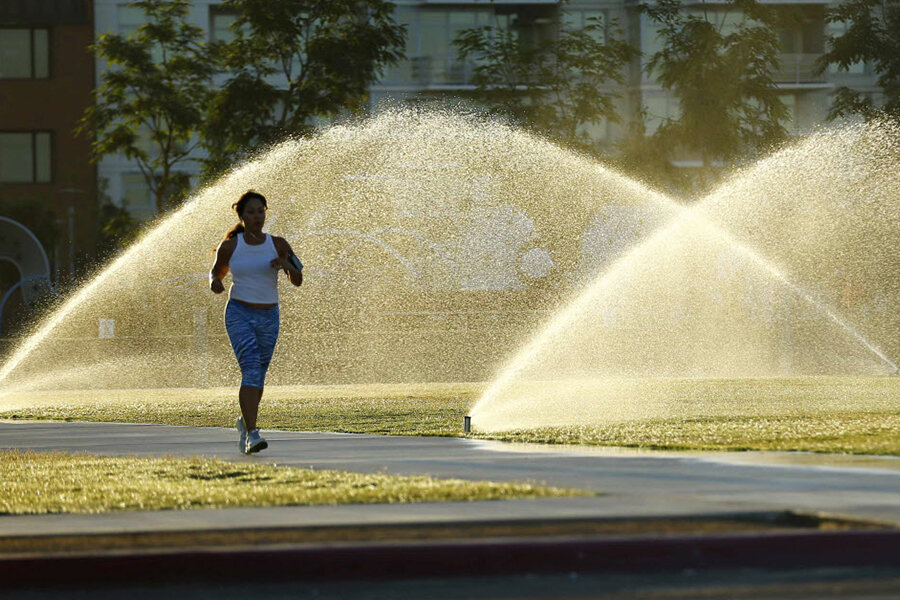California water suppliers back plan to manage conservation
Loading...
| Fresno, Calif.
California decided Wednesday to allow hundreds of local water districts to set their own conservation goals after a wet winter eased the five-year drought in some parts of the state.
The new approach lifts a statewide conservation order enacted last year that requires at least a 20 percent savings.
Beginning next month, districts serving nearly 40 million Californians will compare water supply and demand with the assumption that dry conditions will stretch for three years. The districts would then set savings goals through January and report their calculations to the state.
Felicia Marcus, chair of the State Water Resources Control Board, called it a difficult set of decisions for the panel.
"We don't want to cry wolf. We also don't want us to put our head in the sand," she said. "This compromise allows us to keep our eyes wide open."
Tam Doduc abstained from voting, saying the revised approach does not do enough to address the drought emergency spelled out by Gov. Jerry Brown in a proclamation last week.
"I have to confess that I feel very uneasy with it," she said of the change. "This is an emergency."
Water board officials rejected a proposal for a modest statewide conservation level, saying it contradicted the intent of the plan to empower local districts.
Regulators said they maintain the authority to return to strict conservation, if conservation dramatically slips or if last winter's rain and snow turns out to be a blip in the easing of the drought.
At her home in Irvine, Lee Nguyen says she's done her part to save water and supports local control over conservation efforts.
"I wash my veggies and I save water," she said, explaining that she uses it on her plants. "I save water for myself, for all of us, and for the environment."
Her supplier, the Irvine Ranch Water District in Orange County, led the push for a regional approach. Fiona Sanchez, director of water resources for the district, said she is confident that districts statewide would carefully study their supply and demand.
"If agencies are not taking it seriously, it will be very evident they can't meet their customers' demands," she said.
Some districts might set strict conservation goals for residents and businesses, while others could determine it is time to lift conservation mandates altogether.
Regulators considered the new approach after El Nino storms delivered nearly average amounts of rain and snow this winter in Northern California, filling key reservoirs.
Southern California, however, remains deep in drought.
Bans on actions such as wasting water by washing sidewalks with a hose or cars without a shut-off nozzle will become permanent under the proposed regulation.
Max Gomberg, a senior climate scientist for the state water board, said Californians understand the drought remains critical. He doesn't expect people to suddenly begin wasting water with the changes.
"Californians have shown that when there's a serious drought and a need to conserve, people step up and pitch in," he said.
Environmentalists have urged state regulators not to let up on conservation, citing forecasts that indicate the possibility of a dry winter ahead. Much of the state remains in severe drought, said Tracy Quinn, a senior policy analyst for the Natural Resources Defense Council.
"This makes a compelling case for not relaxing conservation standards as we head into the hottest, driest and highest water using season of the year," she said. "Conservation needs to be a way of life in California."
Southern California landscaper Greg Gritters says local water officials are best suited to manage their supplies.
His clients have had to choose between keeping their lawns green at the expense of huge water bills or turn down their sprinklers and watch their yard turn brown.
"Either way they're unhappy," said Mr. Gritters, owner of Vintage Landscape in Coachella Valley.





